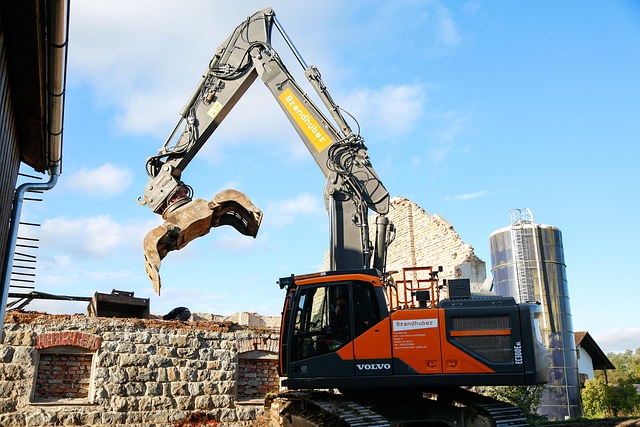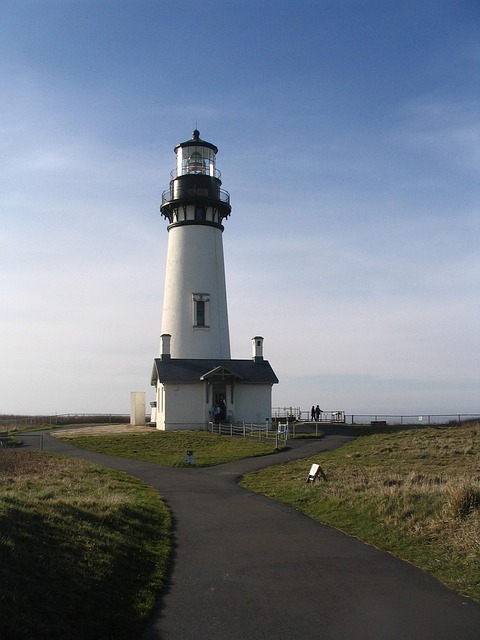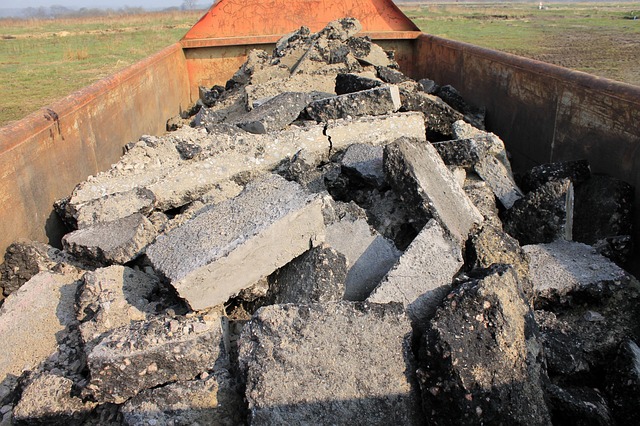
Category: Historical Landmarks in Lane County Oregon
Historical Landmarks in Lane County, Oregon: A Comprehensive Guide
Introduction
Nestled in the heart of the Pacific Northwest, Lane County, Oregon, boasts a rich historical tapestry woven with threads of indigenous heritage, pioneering spirit, and cultural evolution. This article delves into the multifaceted world of historical landmarks within Lane County, exploring their significance, global impact, economic value, technological integration, regulatory framework, challenges, and future trajectory. Through an in-depth examination, we will uncover the essence of these landmarks, their role in shaping communities, and their potential to drive sustainable development while navigating contemporary issues.
Understanding Historical Landmarks in Lane County, Oregon
Definition and Core Components
Historical landmarks in Lane County refer to physical sites or structures that hold significant historical, cultural, or architectural value. These landmarks can include ancient indigenous artifacts, historic buildings, monuments, museums, and archaeological sites. Each landmark tells a unique story about the county’s past, reflecting its diverse narratives of settlement, growth, and transformation.
The core components of these landmarks encompass:
- Historical Context: The period or event associated with the landmark, such as early Native American settlements, the Oregon Trail, or the establishment of agricultural communities.
- Cultural Significance: The cultural value attributed to the landmark by local communities, including its role in preserving traditions, telling stories, or fostering community identity.
- Architectural Style: The distinct architectural design or construction techniques employed, ranging from rustic log cabins to elegant Victorian structures.
- Archaeological Value: The presence of artifacts or remnants that offer insights into past civilizations and their way of life.
Historical Context and Significance
Lane County’s historical landmarks are deeply rooted in its complex history. Native American tribes, including the Kalapuya, Yamsin, and Chemawine, inhabited these lands for thousands of years before European exploration. The discovery of rich agricultural resources and fur-bearing animals attracted early settlers along the Oregon Trail, leading to significant population growth and cultural exchange.
The county’s landmarks serve as tangible connections to this past, offering visitors and residents alike a chance to immerse themselves in history. They contribute to a sense of place and belonging, fostering an understanding of the region’s unique character. Moreover, these landmarks play a vital role in tourism, attracting visitors interested in exploring Oregon’s rich heritage.
Global Impact and Trends
The influence of Lane County’s historical landmarks extends far beyond its borders, contributing to global cultural awareness and tourism. Here are some key trends shaping their international profile:
-
Cultural Exchange and Education: Landmarks like the Old Mill District in Eugene, with its well-preserved historic buildings, offer educational opportunities for tourists worldwide, promoting cultural exchange and appreciation for local history.
-
Sustainable Tourism: The county’s commitment to preserving landmarks encourages eco-conscious travel, as visitors can explore historic sites while enjoying the region’s natural beauty.
-
International Recognition: Notable landmarks, such as the University of Oregon’s Historic District, have gained international acclaim, attracting scholars and history enthusiasts from around the globe.
-
Global Heritage Networks: Lane County’s landmarks are part of global networks that promote cultural heritage conservation, facilitating knowledge sharing and best practices among communities worldwide.
Economic Considerations
Market Dynamics and Investment Patterns
Historical landmarks in Lane County significantly impact local and regional economies. They attract tourists, creating opportunities for accommodation, dining, retail, and entertainment businesses. The Old Town Eugene district, with its rich history and vibrant culture, is a prime example, hosting various shops, restaurants, and cultural events that drive economic activity.
Investment patterns in landmark preservation demonstrate the economic potential of these sites. Private investments, grants, and public-private partnerships contribute to their restoration and maintenance, creating jobs and fostering local entrepreneurship. For instance, the rehabilitation of historic buildings for mixed-use developments can stimulate real estate markets and generate long-term revenue.
Role in Economic Systems
Landmarks serve as catalysts for economic growth by:
- Attracting Businesses: Companies often locate near historical districts to benefit from the foot traffic and positive image associated with these areas.
- Enhancing Property Values: Well-preserved landmarks can increase property values, encouraging investments in residential and commercial real estate.
- Supporting Local Industries: Tourism related to landmarks contributes to the success of local farmers’ markets, artisan shops, and craft breweries, diversifying the economy.
- Fostering Entrepreneurship: The unique character of historical districts inspires entrepreneurs to open niche businesses catering to specific visitor interests.
Technological Advancements
Digital Interpretation and Engagement
Technological advancements have revolutionized how we experience and interpret historical landmarks. Here’s a look at some key integrations:
- Interactive Apps: Mobile applications provide self-guided tours, virtual exhibits, and augmented reality experiences, enhancing visitor engagement and accessibility.
- Online Databases: Comprehensive digital archives house historical records, images, and stories, making them accessible worldwide for research and education.
- Social Media Engagement: Social media platforms allow landmarks to share updates, events, and behind-the-scenes content, attracting a younger audience and fostering community involvement.
- Virtual Reality (VR) Experiences: VR technology offers immersive virtual tours of landmark sites, catering to those who cannot visit in person and providing a unique perspective on history.
Future Potential
The future holds immense potential for technological integration within the historical landmarks sector:
- Smart Guideways: Integrating Internet of Things (IoT) devices into landmarks could provide real-time information and personalized experiences, adapting to individual visitor preferences.
- Artificial Intelligence (AI): AI-powered chatbots and virtual assistants can offer guided tours and answer queries in multiple languages, improving accessibility for international visitors.
- 3D Modeling and Printing: Advanced 3D modeling can recreate lost or damaged artifacts, while 3D printing can facilitate the reproduction of historical objects for educational purposes.
- Data Analytics: Analyzing visitor data can help landmarks make informed decisions about programming, marketing, and infrastructure improvements.
Policy and Regulation
Governance Framework
The preservation and management of historical landmarks in Lane County are guided by a comprehensive policy and regulatory framework:
- Local Government Authorities: Cities and counties within Lane County play a primary role in landmark designation, conservation, and development regulations through their planning departments.
- State and Federal Agencies: The Oregon State Historic Preservation Office (SHPO) and the National Park Service (NPS) provide technical assistance, funding opportunities, and guidelines for landmark preservation.
- Non-Profit Organizations: Local historical societies and heritage organizations actively participate in landmark conservation efforts, conducting research, offering educational programs, and advocating for their protection.
Key Policies and Their Influence
Several policies shape the landscape of historical landmarks:
- Landmark Designation: Formal processes ensure that eligible sites are identified and protected, preserving their integrity for future generations.
- Zoning Regulations: Local governments implement zoning laws to regulate development near landmarks, ensuring their visual and environmental compatibility.
- Funding Mechanisms: Grants, tax incentives, and public-private partnerships provide financial support for landmark restoration, maintenance, and educational programs.
- Cultural Resources Management: Policies address the responsible management of archaeological sites, cultural artifacts, and historic landscapes, balancing preservation with development.
Challenges and Criticisms
Overcoming Obstacles
Despite their significance, historical landmarks in Lane County face several challenges:
- Funding Shortages: Restoring and maintaining landmarks requires substantial financial resources, often straining local budgets and relying on inconsistent grant funding.
- Lack of Awareness: Some landmarks struggle with low visitor attendance due to limited marketing or community awareness.
- Development Pressures: Urban expansion and development projects can threaten landmark integrity, requiring careful planning and mitigation strategies.
- Preservation Techniques: Preserving historic materials and structures requires specialized knowledge and techniques, which may be challenging to implement effectively.
Proposed Solutions
Addressing these challenges calls for strategic initiatives:
- Public-Private Partnerships: Collaborating with businesses and developers can bring additional funding and resources while ensuring landmark preservation in new projects.
- Community Engagement: Involving local residents and organizations fosters a sense of ownership, increasing support and participation in landmark conservation efforts.
- Educational Programs: Implementing school programs and community workshops raises awareness about landmarks’ importance, encouraging stewardship and visitation.
- Sustainable Preservation Practices: Adopting advanced preservation technologies and techniques ensures the long-term viability of landmarks while minimizing intervention.
Case Studies: Successful Applications
1. The Oregon Museum of Science and Industry (OMSI)
OMSI in Portland, located in neighboring Multnomah County, serves as an excellent case study for successful landmark integration. This iconic museum, housed in a former water-treatment plant, seamlessly blends historical preservation with modern science education. By repurposing the industrial structure, OMSI has become a vibrant cultural hub, attracting visitors of all ages. Its interactive exhibits and educational programs highlight the region’s scientific achievements while preserving its industrial heritage.
2. The Old Mill District, Eugene
The Old Mill District in Eugene is a prime example of transforming a historic area into a thriving urban destination. Once a bustling mill town, it has been carefully restored, featuring well-preserved historic buildings, vibrant restaurants, and unique shops. The district’s success lies in its ability to balance the preservation of its past with modern development, creating a dynamic and attractive community space.
3. Kalapuya Canyon Trail, Springfield
This case study focuses on a lesser-known landmark, the Kalapuya Canyon Trail, which offers a glimpse into the region’s indigenous history. The trail, located in Springfield, is a beautifully maintained hiking path that follows an ancient Native American route through scenic canyons. Interpretive signs along the way share stories of the Kalapuya people, providing visitors with an immersive cultural experience. This approach to landmark preservation educates and engages visitors while promoting cultural understanding.
Future Prospects
Emerging Trends and Growth Areas
Looking ahead, the future of historical landmarks in Lane County is filled with promising trends and opportunities:
- Digital Transformation: Continued technological advancements will shape visitor experiences, with virtual tours, augmented reality applications, and interactive exhibits becoming more sophisticated.
- Sustainable Preservation: There will be a growing emphasis on eco-friendly preservation practices, integrating renewable energy sources and sustainable building materials in landmark restoration projects.
- Community Engagement: Involving local communities in landmark interpretation and programming will foster a deeper sense of connection and ownership.
- Storytelling through Art: Integrating public art installations that reflect the region’s history and culture will enhance landmark experiences, making them more engaging and accessible.
Strategic Considerations
To capitalize on these trends, stakeholders should consider:
- Long-term Conservation Plans: Developing comprehensive strategies for landmark preservation ensures their protection for future generations while accommodating growth and development.
- Community Collaboration: Building partnerships with local artists, historians, and community groups strengthens landmark interpretation and engagement.
- Research and Education: Investing in research initiatives and educational programs deepens the understanding of landmarks’ historical and cultural significance.
- Adaptive Reuse: Encouraging adaptive reuse projects that respect the character of historic districts promotes sustainable development while preserving heritage.
Conclusion
Historical landmarks in Lane County, Oregon, are not just static structures; they are dynamic elements that shape communities, inspire creativity, and drive economic growth. From their rich historical context to their global impact, these landmarks play a pivotal role in the county’s identity and its place in the world. By navigating challenges, embracing technological advancements, and fostering community engagement, Lane County can ensure the preservation and enhanced interpretation of its historical treasures for generations to come.
FAQ Section
Q: How do I find out about upcoming events at historical landmarks in Lane County?
A: Local tourism websites, visitor centers, and social media platforms provide up-to-date information on events, exhibitions, and special tours at historical landmarks.
Q: Are there any guidelines for visiting sensitive archaeological sites?
A: Absolutely. Visiting these sites requires proper guidance from trained professionals to ensure minimal impact on the environment and cultural resources. Contact local historical societies or park rangers for information on guided tours and responsible visitor behavior.
Q: Can I volunteer at a historical landmark in Lane County?
A: Yes, many landmarks rely on volunteers for various tasks, including interpretation, maintenance, and special events. Check the websites of individual landmarks or contact local historical organizations to inquire about volunteer opportunities.
Q: How can I support the preservation of historical landmarks?
A: There are numerous ways to contribute, from visiting and sharing your experiences to participating in fundraising campaigns, donating to landmark conservation funds, or becoming a member of supporting organizations. Every action helps ensure these sites’ protection for future generations.









